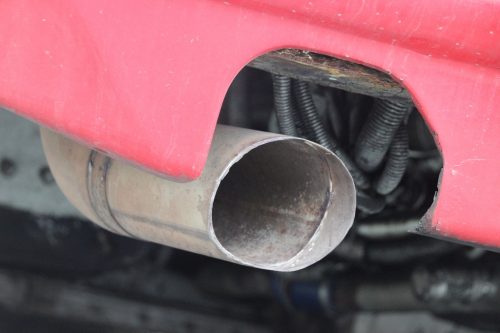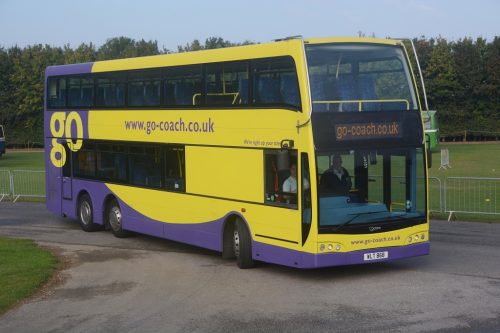
The DVSA is introducing a new defect classification system and making a number of changes to the MOT assessment for PSVs, but some concerns are raised about new emission deficiencies. James Day reports
The Driver and Vehicle Standards Agency (DVSA) has released a draft of the updated Public Service Vehicles (PSV) Inspection Manual, which is due to come into effect on May 20, 2018.
The new draft makes a large number of changes to MOT requirements. Though many of them have been made to more cohesively fit with a new defect framework, there are other changes, particularly on the emissions side, which are more significant and have some operators concerned.
New defect categorisation system
A new defect categorisation system is being introduced, which places all deficiencies into three groups. These are: […]
By subscribing you will benefit from:
- Operator & Supplier Profiles
- Face-to-Face Interviews
- Lastest News
- Test Drives and Reviews
- Legal Updates
- Route Focus
- Industry Insider Opinions
- Passenger Perspective
- Vehicle Launches
- and much more!
- Minor – deficiencies with no significant effect on the safety of the vehicle, impact on the environment and other minor defects. A vehicle which only has minor defects will still pass an MOT;
- Major – more significant non-compliances which may prejudice the safety of the vehicle, have an impact on the environment or put other road users at risk; and
- Dangerous – deficiencies constituting a direct and immediate risk to road safety or having an impact on the environment.
A DVSA spokesperson told CBW that a key reason for the change is to give very clear advice that a vehicle with a dangerous defect should not be driven until repaired. Should such a defect be found, the wording ‘Fail – do not drive until repaired’ will appear on the certificate.
Although the standards for the issue of prohibitions at annual test had not been formally announced when CBW went to press, the spokesperson said that whether or not a vehicle which fails its MOT is given an immediate prohibition remains at the discretion of the vehicle examiner. A dangerous fault does not guarantee that a prohibition will be issued, and a prohibition may still be issued for major faults.
Many of the changes made in the new MOT manual have been to divide a number of deficiencies into different severities to fall within these new categories.
Unsafe modifications
A number of different aspects of vehicles will be tested for unsafe modifications. Most of these new deficiencies have a major defect category and dangerous defect category, depending on how much of an adverse effect they have.
For exterior bodywork, a dangerous defect has been added for unsafe modification which is judged to have seriously weakened a component. A new dangerous defect has also been added for an unsafe modification to the steering column, along with power steering.
Unsafe modification deficiencies have also been added for axles/stub axles, along with the braking system and suspension.
A defect is reportedly being added for unsafe modification to hand operated brake control valves, though this was not noted on the document itself.

Exterior
A few changes have been made to the assessment of a vehicle’s exterior.
Concerning registration plates, a deficiency has been added for ‘not in accordance with requirements.’ This means a registration mark with characters which are incorrectly spaced, malformed or use misplaced fixing bolts to alter the registration mark appearance will be deemed to be not in accordance with the requirements. The vehicle will record a major defect.
For cab doors, different severities for door defects have been added, dependent on action (whether a hinged door or sliding door). In particular, a hinged action door which will not remain closed or is likely to fly open has been listed as a dangerous defect.
Rear markings and reflectors have seen the positioning of reflectors/markings broken down into severities, with white colour to the rear and red colour to the front being classed as a major failure. Insecurity of fittings has also been broken down into severities.
Under the section on lamps, daytime running lamps and front fog lamps are now included in the test for vehicles registered post March 1, 2018. A inoperative front fog lamp will give a major fault, and both front fog lights and running lights will follow the same standard rules as other lamps (for example, the security of the fitting, colour of the light, deterioration etc).
Interior
Cuts in seatbelt webbing must now be significant enough to affect the operation of the seatbelt or significantly weaken the webbing to be assessed as a major defect. A superficial cut would instead be listed as a minor defect.
Under the section entitled ‘interior of body, passenger entrances, exit steps and platforms’ a new deficiency has been added for a crew seat that does not automatically fold away when not is use and encroaches on an emergency exit. This is classed as a major fault. There are also alterations to the deficiencies for number of seats. Where reduced from the approved number, a minor defect is recorded, and where the number of seats is increased beyond the approved number, a major defect is recorded.
Electrics
Concerning electrical wiring and equipment, the deficiencies now include chafing, damage and deterioration of electrical wiring, with severity from minor to dangerous depending on the extent of the damage.
A deficiency will also be added for battery security likely to cause a short circuit (major) and for the battery switch and/or fuse being defective (major).
Engine, transmission and emissions
Concerning exhaust emissions, smoke values have been amended to cater for testing a specific value or to the manufacturers’ plate values. A new specific value of 0.7m-1 has been added for post-2014 vehicles on the smoke meter test. Any Euro 4, 5 or 6 vehicle exceeding this will receive a major fault. It is worth noting that the figure required from the London Ultra-Low Emission Zone will be a much lower 0.2m-1, and a modern vehicle outputting close to 0.7m-1 on the smoke test is likely to be defective in some way.
A new Reduced Pollution Certificate (RPC) smoke meter test section has also been added for emissions. If a vehicle equipped with a Diesel Particulate Filter (DPF) shows any sign of visible smoke, or the Engine MIL light is illuminated, the vehicle will record a major defect.
Under engine and transmission mounts, a deficiency for mounting or subframe securing bolts being loose or missing is now included, while under oil leaks, a deficiency has been added for an oil leak which can deposit oil in a continuous flow and/or which constitutes a serious fire risk. Unsurprisingly, this will result in a dangerous defect being recorded.
On the topic of fuel tanks and systems, deficiencies for the filler cap (missing, torn seal etc) are all listed as major defects as opposed to dangerous. If the fuel is leaking and presents a fire risk, this is classed as a dangerous defect. A fuel tank system which has been holed is now a deficiency.
For exhaust systems, differing defect severity has been added for an exhaust position where fumes are likely to enter the cab (major) and where the fumes are already entering the cab (dangerous).

Tyres, wheels, axles and suspension
Concerning the condition of tyres, a change has been made to the standard applied for the assessment of cuts in a tyre. Cords that can be felt in a cut now count as a deficiency irrespective of whether they can be seen.
The spare wheel and carrier deficiency has been separated out to categorise various severities, depending on its condition.
Changes to the suspension section include deficiencies for ball joint dust covers being broken into a minor and major categorisation depending on the extent of deterioration. Anti-roll bar and anti-roll bar linkage are now all covered under anti-roll bar assembly, where there are major defects for a missing assembly where it is a standard component, as well as for insecure fitting and deterioration.
The deficiency for a cracked axle/stub axle has been expanded to include fractured or deformed axles and listed as a dangerous fault.
Driver controls and view
Under the section on glass and view of the road, the area of glazing not swept by the wipers is now in the scope of test, though only in a minor categorisation.
Damage or obstruction of side windows that impair view of mandatory mirrors has been amended to cover any window, and the previous 40mm size measurement for the obstruction has been removed. Instead, the standard is now based on whether the obstruction materially or seriously restricts the driver’s view, representing a major fault if it does. The check of the driver’s view is to be assessed from the driver’s seat.
Ineffective windscreen washers will now be classed as a minor defect if the issue is simply no washer fluid or misaligned jets. Where the washers are not operative, the defect is classed as major.
Under steering, the ball joint dust cover deficiency has been broken into different severities depending on state of repair.
Brakes
Under the pressure/vacuum warning and build up section, a major defect is recorded if there is not enough pressure or vacuum to give at least four fully assisted brake applications after the warning device has indicated minimum effective working conditions. If there is not enough for at least two applications, a dangerous defect is recorded.
Electronic parking brake controls will now be tested along with other handbrakes. Major defects are recorded if the activator is missing, damaged or inoperative, or if there is incorrect function or a warning indicator showing a malfunction.
Concerning brake systems and components, the deficiency under brake pipe and hoses for leaks has differing severities on it being an air leak (major) or a fluid leak (dangerous). Oil contamination of brakes is now catered for, with major and dangerous categories depending on severity. Brake fluid level is broken down into three categories of severity, with dust covers also broken down in minor and major severities. LSV deficiency severity is now dependent on whether vehicle also has ABS operation or not.
Under service brake performance, brakes being out of balance is broken down into two severities. If braking effort from any wheel on an axle is less than 70% of that from another wheel on the same axle, it is categorised as a Major defect. For steered axles, if the out of balance is greater than 50% it is categorised as a dangerous defect. Brake efficiency is broken down into two severities (required effort not met is a major defect and if the total service brake efficiency is less than 50% of the required effort this is dangerous defect).
The deficiency ‘secondary brake performance out of balance’ is broken down as with the service brake out of balance deficiency, as are the secondary brake’s efficiency requirements.
As with service and secondary efficiencies, parking brake efficiency has two severities – required effort not met is a major defect and where the total park efficiency is less than 50% of the required effort, this is a dangerous defect.
Concerns raised over new MIL light MOT failure
Austin Blackburn, Managing Director of Go-coach Hire Ltd and The Bus Doctor Ltd, highlighted the change to inspection number 05
in the manual – exhaust emissions. In particular, he identified a new major failure concerning an illuminated Engine MIL light, which the
document states would indicate a malfunction and be classed as a major defect, causing the vehicle to fail its MOT.
He contacted the DVSA, asking: “Many of our vehicles and those of most other operators have MIL lights on, but have AdBlue systems working correctly. This is partly due to many manufacturers now on Euro 4, 5 and 6 keeping the MIL light on for 400 days after a defect is recorded and repaired. These codes are not possible to delete without reprogramming the ECU. A DVSA spokesperson responded: “If a vehicle is presented for test on or after May 20, 2018 with a MIL illuminated, it will fail the test. That is regardless of the actual reason for the illumination.
“We appreciate that some dashboards take a long time to automatically clear the MIL even though the actual fault has been repaired. Accordingly, the MIL will need positive intervention to be reset if there has been a fault. Basically the repair will need both the defect addressing and the MIL resetting to pass the test.”
Austin told CBW: “On many engines (certainly Cummins and Mercedes-Benz) the MIL light will illuminate when there is a potential emissions problem. Even when the fault is repaired the light will stay on for a while (up to 400 days). The fault is not active, but not deleteable. At one time, it was intended that enforcement officers would be able to see the MIL light and plug in an onboard diagnostics reader into the diagnostic socket to look
at historical faults. However, this has not happened, possibly because it was seen to be intrusive and unreliable.
“The problem for the industry – and it’s a big problem – is that you cannot delete the fault codes with normal software. On Cummins the only way to clear the faults is to do a software upgrade. Basically, this is where Cummins take the ECU back to factory settings and it wipes its brain of anything that’s happened before. This is ok, but costs in the region of £500 – 600. Couple this to the fact that whenever Cummins look at your bus everything is a problem, and operator could be looking at a bill of many thousands just to turn a light off on a vehicle that actually does not have an emission problem.
“To give you an idea of how massive this problem is, I would say I have 10 or more vehicles with lights on. All the buses I purchased from Nottingham had the light on, along with two of the three from Epsom Coaches and all the Euro 5s from Warrington. I would say at least a quarter of vehicles in London have the MIL lights on.
“It’s going to lead to loads more downtime and cost at a time when we can least afford it. The mad thing is if we did not upgrade and stayed at Euro 3 or below, we would not have these problems as they do not have not have MIL lights!
“While an active MIL light should be picked up on at MOT, in my opinion it should be advisory and only see a minor fault issued. A point which I would argue should see greater attention is where there is evidence of tampering with emission control equipment.
“This should be a dangerous fault instead of major. Those two changes would make the assessment more realistic. As an industry we should say that we won’t accept operators who tamper with their vehicles to gain a commercial advantage.”
[/wlm_ismember]


